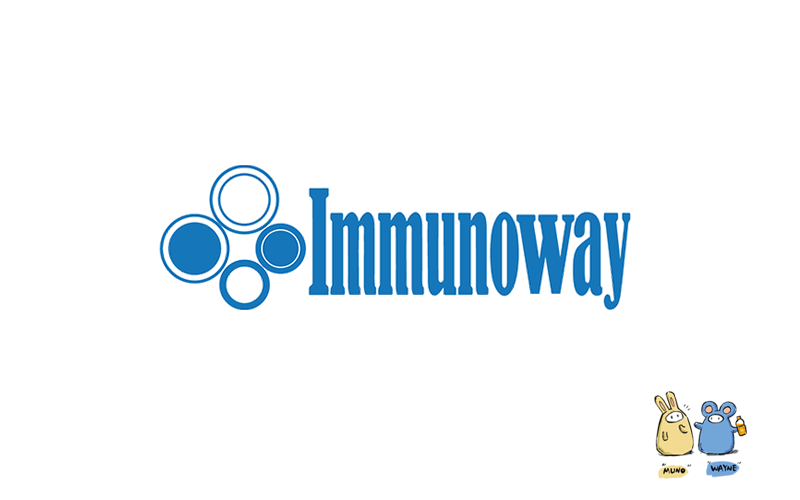
Catalog: YN2126
Size
Price
Status
Qty.
200μL
$450.00
In stock
0
100μL
$280.00
In stock
0
40μL
$150.00
In stock
0
Add to cart


Collected


Collect
Main Information
Target
LOXL2
Host Species
Rabbit
Reactivity
Human, Rat, Mouse
Applications
WB, ELISA
MW
85kD (Observed)
Conjugate/Modification
Unmodified
Detailed Information
Recommended Dilution Ratio
WB 1:500-2000; ELISA 1:5000-20000
Formulation
Liquid in PBS containing 50% glycerol,0.5% BSA and 0.02% sodium azide.
Specificity
LOXL2 Polyclonal Antibody detects endogenous levels of protein.
Purification
The antibody was affinity-purified from rabbit antiserum by affinity-chromatography using epitope-specific immunogen.
Storage
-15°C to -25°C/1 year(Do not lower than -25°C)
Concentration
1 mg/ml
MW(Observed)
85kD
Modification
Unmodified
Clonality
Polyclonal
Isotype
IgG
Related Products
Antigen&Target Information
Immunogen:
Synthesized peptide derived from part region of human protein
show all
Specificity:
LOXL2 Polyclonal Antibody detects endogenous levels of protein.
show all
Gene Name:
LOXL2
show all
Protein Name:
Lysyl oxidase homolog 2 (Lysyl oxidase-like protein 2) (Lysyl oxidase-related protein 2) (Lysyl oxidase-related protein WS9-14)
show all
Background:
This gene encodes a member of the lysyl oxidase gene family. The prototypic member of the family is essential to the biogenesis of connective tissue, encoding an extracellular copper-dependent amine oxidase that catalyses the first step in the formation of crosslinks in collagens and elastin. A highly conserved amino acid sequence at the C-terminus end appears to be sufficient for amine oxidase activity, suggesting that each family member may retain this function. The N-terminus is poorly conserved and may impart additional roles in developmental regulation, senescence, tumor suppression, cell growth control, and chemotaxis to each member of the family. [provided by RefSeq, Jul 2008],
show all
Function:
cofactor:Contains 1 lysine tyrosylquinone.,cofactor:Copper.,PTM:The lysine tyrosylquinone cross-link (LTQ) is generated by condensation of the epsilon-amino group of a lysine with a topaquinone produced by oxidation of tyrosine.,similarity:Belongs to the lysyl oxidase family.,similarity:Contains 4 SRCR domains.,tissue specificity:Expressed in many tissues. Highest expression in reproductive tissues, placenta, uterus and prostate.,
show all
Cellular Localization:
Secreted, extracellular space, extracellular matrix, basement membrane . Nucleus . Chromosome . Endoplasmic reticulum . Associated with chromatin (PubMed:27735137). It is unclear how LOXL2 is nuclear as it contains a signal sequence and has been shown to be secreted (PubMed:23319596). However, a number of reports confirm its intracellular location and its key role in transcription regulation (PubMed:22204712, PubMed:22483618). .
show all
Tissue Expression:
Expressed in many tissues (PubMed:10212285). Highest expression in reproductive tissues, placenta, uterus and prostate (PubMed:10212285). In esophageal epithelium, expressed in the basal, prickle and granular cell layers (PubMed:22204712). Up-regulated in a number of cancers cells and tissues.
show all
Reference Citation({{totalcount}})
Catalog: YN2126
Size
Price
Status
Qty.
200μL
$450.00
In stock
0
100μL
$280.00
In stock
0
40μL
$150.00
In stock
0
Add to cart


Collected


Collect
Recently Viewed Products
Clear allPRODUCTS
CUSTOMIZED
ABOUT US
Toggle night Mode
{{pinfoXq.title || ''}}
Catalog: {{pinfoXq.catalog || ''}}
Filter:
All
{{item.name}}
{{pinfo.title}}
-{{pinfo.catalog}}
Main Information
Target
{{pinfo.target}}
Reactivity
{{pinfo.react}}
Applications
{{pinfo.applicat}}
Conjugate/Modification
{{pinfo.coupling}}/{{pinfo.modific}}
MW (kDa)
{{pinfo.mwcalc}}
Host Species
{{pinfo.hostspec}}
Isotype
{{pinfo.isotype}}
Product {{index}}/{{pcount}}
Prev
Next
{{pvTitle}}
Scroll wheel zooms the picture
{{pvDescr}}





















